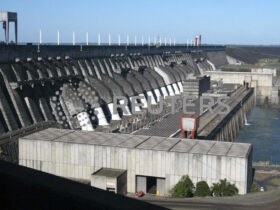The Institute of Bioeconomy of the University of Valladolid, winner of the I Edition of the Naturgy-CSIC Foundation Award for research and technological innovation in the energy field, has presented today at the headquarters of the Higher Council for Scientific Research (CSIC) the investigation carried out over the last two years corresponding to the development of the award -winning project CO₂UP: climbing of the CO2 hydrothermal reduction process using biomass as a reducer, led by principal researcher Ángel Martín.
This initiative aims to develop and validate a process for Transform carbon dioxide into high -value added chemicalssuch as organic acids and alcohols, thus promoting its elimination and valorization, using plant biomass residues.
The development of the research has been supervised and validated by a Specialized Scientific Commissioncoordinated by the global CSIC matter area.
Significant advance
According to its authors, the results achieved with biomass in the development of CO₂UP represent a significant advance towards the development of sustainable capture and valuation technologies of CO2, With high potential for scalability and industrial applicationthus contributing to the reduction of emissions and compliance with the decarbonization objectives, to the consolidation of a more efficient circular economy and sustainable development.
The CO₂UP project has made substantial advances in the design, construction and validation of a pilot plant, which has allowed demonstrating the viability of the process and generate key information for optimization.
The studies carried out They have allowed to identify and quantify the main energy indicators of the system. Specifically, the stoichiometric relationship of reagents (proportions and amounts used) is identified as a key factor in reducing energy consumption and improving the competitiveness of the process with respect to conventional CO₂ capture and storage technologies.
Biomass CO2 conversion
The scientific-technical impact of LThe results achieved is revealed in the publications made in specialized magazines reference and in reputed national and international congresses.
From the economic and industrial perspective, a larger scale of the process with A treatment capacity of 25,000 kg of CO₂ per yearwhich would allow its integration into facilities with relevant emissions, such as the Biomass boiler of the University of Valladolid.
At the same time, strategies have been developed to optimize CO₂ conversion into high -added products, such as formic acid, methanol and acetic acid, In addition to advances in the separation and fractionation of these compounds by selective membraneswhich has allowed improving the global efficiency of the system.

 Rafael Villaseca, president of the Naturgy Foundation
Rafael Villaseca, president of the Naturgy FoundationNaturgy Foundation, key agent
Naturgy Foundation President Rafael Villaseca said that, with the presentation of the results of the I edition of this initiative, «Naturgy Foundation strengthens its key role as an active agent in promoting research and technological innovation in the field of energywith the aim of favoring actions aimed at accelerating the energy transition in Spain ».
For her part, the president of the CSIC, Eloísa del Pino, highlighted the Importance of collaboration with the Naturgy Foundationwhose support has been key to the application and escalation of this technological development.
«This collaboration reinforces CSIC’s commitment to the research of excellence and innovation in energy sustainability, promoting the development of advanced technologies for decarbonization and circular economyand promoting more efficient and sustainable energy models, ”said the president of the institution.
Energy Innovation Award
Naturgy Foundation launched, together with the CSIC, the first edition of the Technological Research and Innovation Award in the energy field in 2023, with The objective of recognizing, promoting and promoting projectswithin the framework of the energy transition, which contribute to the fulfillment of the decarbonization objectives in our country.
It is aimed at public or private research agencies, non -profit, including public, private universities and other R&D centers.
In its first edition, the Prize received 18 eligible proposalsdeveloped by 11 universities, 5 research institutes and 2 non -profit foundations, based in 9 autonomous communities. The proposals were valued by a scientific commission, coordinated by the CSIC, and a jury of experts. This recognition, which in 2025 celebrates its third edition, is endowed with 100,000 euros.




